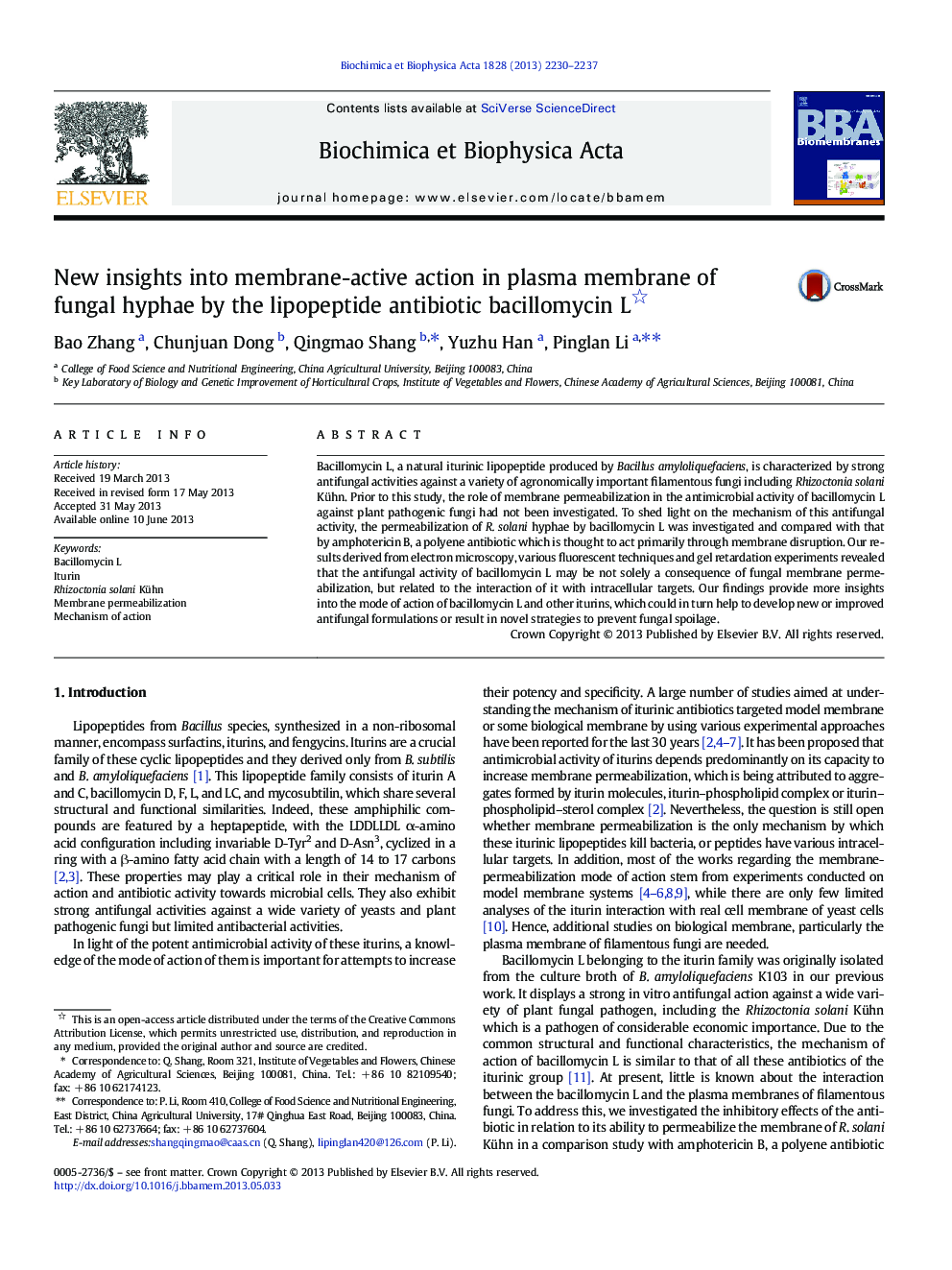| Article ID | Journal | Published Year | Pages | File Type |
|---|---|---|---|---|
| 10797076 | Biochimica et Biophysica Acta (BBA) - Biomembranes | 2013 | 8 Pages |
Abstract
As shown in the figure above, the permeabilization of plasma membrane of R. solani hyphae was dependent on antibiotic concentration, and the response curve correlated roughly with that found for growth inhibition. However, at the concentrations of IC50 (50 μg/ml), bacillomycin L had an effect on fungal growth while it permeabilized the fungal hyphae slightly. In contrast, amphotericin B at the concentrations of IC50 (1 μg/ml) had much more intense permeabilization than that of bacillomycin L at IC50, even though they had a similar antifungal effect at this point. The result suggests that the growth inhibition and membrane permeabilization by bacillomycin L were not completely relevant. On the basis of the aforementioned results in combination with other investigations such as fluorescence microscopy observations, fluorescence polarization measurements, and gel retardation experiments in our study, we can cautiously conclude that the inhibitory activity of bacillomycin L against R. solani Kühn may not only solely involve membrane permeabilization, but also link to the interaction with some intracellular targets. Our findings provide more insights into the membrane-active mode of action of bacillomycin L and other cyclic lipopeptides, which could in turn help to develop new or promising antifungal peptides or result in novel strategies to prevent fungal spoilage.80
Related Topics
Life Sciences
Biochemistry, Genetics and Molecular Biology
Biochemistry
Authors
Bao Zhang, Chunjuan Dong, Qingmao Shang, Yuzhu Han, Pinglan Li,
